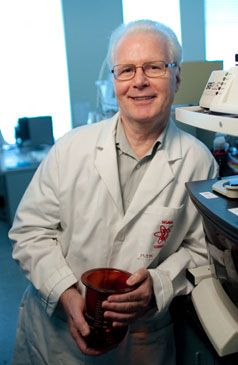A new book tracks and projects global carbon dioxide distribution and its effects.
In 1896, writing in Philosophical Magazine, a Swedish chemist named Svante Arrhenius became the first scientist to propose that an increase in the amount of carbon dioxide (CO2) in the atmosphere would cause a corresponding increase in the surface temperature of the earth.
Arrhenius wrote an equation for calculating temperature increase based on CO2 levels, later revised it and won the Nobel Prize for chemistry in 1903.
Half a century later, the American scientist Charles Keeling began monitoring CO2 levels at the Mauna Loa Observatory in Hawaii and at the South Pole. Keeling concluded that atmospheric CO2 levels could be linked to the quantity of fossil fuels being burned. He created the Keeling Curve, which plots annual CO2 levels at Mauna Loa.
Now, two Lehigh researchers and their British collaborator have written a book dedicated to Arrhenius and Keeling and based on their work. An Introductory Global CO2 Model is scheduled to be published in July by World Scientific Publishing Co.
The book’s authors are Anthony McHugh and William E. Schiesser, professors of chemical and biomolecular engineering at Lehigh, and Graham W. Griffiths of the School of Engineering and Mathematical Sciences at City University London.
The model described in the book uses ordinary differential equations (ODEs), the software programming languages Matlab and R, and historic and current data to chart the levels of global CO2 distribution from 1850 to 2100 in seven “well-mixed reservoirs”—the upper and lower atmosphere, long- and short-lived biota (plants), the upper and lower layers of the ocean, and the marine biosphere (living marine organisms).
Schiesser and McHugh believe the book should be accessible to students with an elementary knowledge of calculus.
“We’re hoping high school seniors can understand this,” says Schiesser. “We use very basic calculus, which we think they should have studied.”
McHugh said the book should also serve as a useful introductory tool to basic scientific programming.
“You can buy the book just to learn how to do Matlab or how to do R," McHugh explains. "At the same time, though, it serves as an important introduction to a problem that has a significant impact on the life and health of our global environment.”
The authors have created a website where they will update the information in their book and answer questions from readers.
“We believe in sharing knowledge openly and completely,” says McHugh. “Our website will be a GPS—a global public square—for CO2 issues.”
Read the full story at the Lehigh University News Center.
-Kurt Pfitzer is a writer with Lehigh University Media Relations.


